NKSDF Equipment
[[Main Page]]
Submachine guns
| MSG-01 | 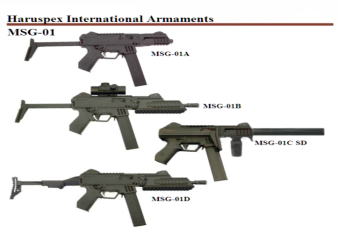
|
Submachine gun | 10mm +P+ class 7N31 AP | 30- or 50-round magazines. The MSG-01 models are in use with the HIL in a variety of roles. Generally special forces, and armored vehicle crews. |
Rifles & Etc
| HBAS Series| The HBAS Bullpup Assault System | 
|
Bullpup Assault rifle | 6.8mm +P+ class 7N31 AP | Made of a rugged, high impact polymer, most of the manufacturing is done utilising CNC machines, with ultrasonic welding for the steel-reinforced receiver halves and the gun barrel being cold hammer forged. It's operating system, boasts a higher reliability over the CBAR's and a lower recoil. The translucent 30 round magazine allows precise assessment of current ammo load to it's operator. The HBAS makes use of 6.8mm +P+ class 7N31 AP (Is compatible with 6.8 SPC rounds) The main draw point is that the HBAS and variants provides carbine length, but rifle muzzle velocity. The bullpup design is also used to minimize the silhouette of soldiers and to maximize effectiveness in turning corners in urban warfare. |
| GAR-01B | 
|
Bullpup Assault rifle | 6.8mm +P+ class 7N31 AP | The GAR-01TB (Gazelle Automatic Rifle) was developed in Runic by the Tenaldunyda uv Semedyno Ehticdno (Directorate of Military Industry - TSE), and was first displayed to public in 2006. Highly reliable, the weapon has been built to withstand severe conditions and be easy to maintain. It's ambidextrous design makes it easy to reload and operate as well. Magazines are equipped with winding handle, so they can be stored loaded and with unwound spring, to avoid loss of spring tension during the storage time. When required, magazine spring can be quickly wound up by rotating the handle to prepare magazine for firing. Magazines hold 125 rounds in a relatively compact package. |
| ACS-01 | 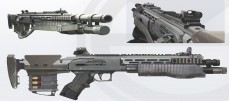
|
Shotgun | 19.5x76mm | In the early 1980s a program called BUAWS (Bullpup Urban Assault Weapon System), was begun under a joint venture with Verlaine Corporate Industries and that of Haruspex International Armaments. The main goal of this programme was to develop a new generation personal firearm, capable of firing high-impulse, multiple projectiles with effective range of 100-150 meters. Using of the multiple projectiles should increase the chances of hitting the target in combat.
The ACS-01 is a bullpup select-fire, smooth-bore weapon, designed to fire special, high-pressure shotshells, loaded with tungsten buckshot or flechettes. CUAWS researchers developed and utilised a patented recoil-operated action with moving barrel and additional, self-regulated gas assist system (used to help unlock breechblock from the barrel if low-power ammo is used). The main goal of this system was to decrease felt recoil down to suitable level. The ACS-01 shotguns are gas-operated, semi-automatic weapons that use long-stroke gas piston located above the barrel. Gas system is fitted with two-position manual gas regulator, to provide reliable functioning with standard magnum (76mm) ammunition. Barrel is locked by rotary bolt. Barrel bore and action are chromed to provide better corrosion resistance. Barrels can be fitted with optional interchangeable chokes. Feed is from detachable drum magazines, holding 30 rounds or stick mags of 10 rounds. Standard furniture includes a long front and either a butt with integral semi-pistol grip or separate pistol grip and side-folding polymer butt. Standard sighting equipment includes a rifle-type rear sight at the front of receiver and a front sight above the gas block. Some version can be fitted with side rail on receiver which can accept mounts for red-dot or other sights. |
| CCNML-01 | 
|
Anti-Personnel rifle | 12.7x54mm special subsonic | The 12.7mm CCNML-01 (Cbaleym Cheban Nevma, mynka lymepan - special sniper rifle, large caliber) supressor sniper rifle is one of the most recent creations of Verlaine Corporate Industries Instrument Design Bureau (ETP). Developed in around 2002 on special request from the Esbaneis Calinedo Canjelac (ECC - "Imperium Security Services"), this rifle was first shown to general public only in late 2005, during arms exhibition FAS 2005 in Prathen. This rifle is said to be in use only by special elements of the ECC and the military legions, which conduct anti-terror and high importance anti-crime operation. Accuracy is claimed as 1 MOA at 100 meters range with precision bullets, and maximum effective range is given at 600 meters. High penetration bullet can defeat Imperium Class 5 (US NIJ Type III / High-Powered Rifle) body armor at 100 meters or 16mm steel plate at 200 meters. The SA-01 cases are based on the .338 Lapua Magnum cases with straight (no neck), and a slightly tapered body. |
Machineguns
| GLM Series| The General Light Machinegun Series | 
|
LMG | 6.8x54mm Haruspex Imperium | The GLM shares in the same polymer construction and general appearance of many HIA weaponry styles. The weapon's receiver is made from stamped sheet steel, reinforced with welded and riveted machined steel inserts. Synthetics were also used (i.e. the handguards, pistol grip, buttpad and cheek rest were all fabricated from nylon). A railed handguard was also developed for the type. GLM prototypes were tested in 1996 and production was completed in 2004.
The GLM utilizes a system that is of a selective fire gas-operated design. The weapon uses ignited powder gases bled through a port in the barrel to provide the weapon's automation. The LMG uses a short-stroke gas piston system located above the barrel, which is fed gas through a three-position adjustable gas regulator. The first gas setting is used for normal operation, the second, for use in difficult environmental conditions and the third setting prevents any gas from reaching the piston, and is used to launch rifle grenades. The weapon uses a rotating cylindrical bolt that contains 7 radially-mounted locking lugs, an extractor and casing ejector. The bolt's rotation is controlled by a cam pin that slides inside a helical camming guide machined into the bolt carrier. The family is built in a traditional layout (the magazine is in front of the trigger), with a rear-mounted pistol grip. The main advantage of this type of arrangement is the overall compactness of the weapon, which can be achieved without compromising the barrel length, hence the overall length of the GLM-01 LMG is shorter than a carbine, but the barrel length is that of an assault rifle. The GLM-01 is hammer-fired and has a trigger mechanism with a fire-control selector that enables semi-automatic fire and fully automatic fire (the fire selector lever is located at the left side of the receiver, just aft of the helical magazine). A cross bolt type safety prevents accidental firing and is located above the trigger; the "safe" setting blocks the movement of the trigger. The weapons are fed from a helical drum magazine, usually with a 225-round capacity, although a large ammo bag may be attached with a 500-round capacity. The magazine release button is placed above the magazine housing, on the left side of the receiver. When the last cartridge is fired from the magazine the bolt and bolt carrier assembly lock to the rear. The GLM-01 LMG also features a barrel with a slotted flash suppressor. |
Infantry Support
| ASRHS-2| The Airborne Short Rifled Howitzer Series 2 | 
|
Artillery | 75 mm | This weapon is a short-rifled howitzer without a recoil or counter-recoil system, mounted on a light aluminum alloy carriage. A funneled (Venturi) tube is attached to the rear of the bored breechblock; its function is to allow the gases to disperse to the rear, thus eliminating a recoil mechanism.
The firing mechanism is seated in a cone-shaped receptacle and centered in the breechblock by vertical struts. The weight of the complete gun is reduced to a minimum by using hollow machined parts, plastic washers, tubular carriage, and aluminum alloy body. Because of the weight of the complete piece, it lends itself to use by airborne troops. |
| 9M-Zylgym (Jackal) MPS| 9M-Zylgym (Jackal) Man Portable System | 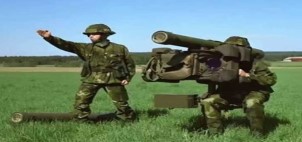
|
Manportable/Vehicle mounted surface-to-air missile | 3 kg HE fragmentation with contact and proximity fuzing | The effectiveness of the 9M1 missile against air targets is attributed to the increase weight of the explosive in the missile's warhead and to the impact/proximity fuze enabling the missile to kill the target both in the event of a direct hit and when it passes at a distance of up to 1.5 m from the target.
The set comprises a universal launcher module for one to four missiles, control and communication equipment, one remote control box, checkout equipment and maintenance kit. The 9M-Zylgym systems can be mounted on ground-based, airborne and sea based platforms. Its full-reloading time is 4 min, loaded launch unit weight - 70 kg, control equipment weight - 24 kg. The launch unit of this system is mounted on tracked or wheeled-type chassis and can be employed in a portable version utilizing a tri-pod setup. |
| Anti-Personnel Mine| The SM-01A " Cbetan " (Spider) Mine | 
|
Mine | Warheads vary, but are generally 1kg | The Cbetan Smart Mine (Spider) is more of a “remote explosive device” than a typical lay-and-forget land mine. It’s detonated by soldier command, and that soldier can even load non-lethal canisters if the mission calls for it. Unlike conventional land mines, the CM-01A Cbetan always has a known location, so it can be safely and easily recovered and redeployed. If that isn't possible for some reason, CM-01A units deactivate after a set time period, so they won’t become a future threat. It's capabilities are badly needed in places like remote fire bases, and or border defensive areas.
A CM-01A Cbetan system consists of up to 63 Munition Control Units (MCUs). They are set up by humans, unlike some land mines that are fired into place using artillery, mortars, or rockets. Each MCU can contain up to 6 reloadable canisters spaced around the device, each of which covers a 60 degree arc to create full 360 degree coverage. Payloads can be anything from Claymore-style steel balls or fragments, to non-lethal gasses or goo. |
Military Utility Vehicles
| H17| The H17 3.5-Ton Cargo Truck | 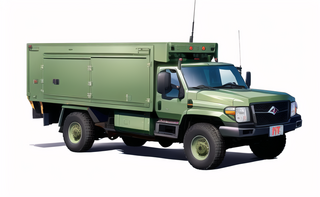
|
Military Logistics Vehicle | 1,500 Vehicles | Various versions of the H17 3.5-Ton LTV are available. These have various wheelbase lengths ,height, cab type, body type and payload capacity. Payload capacity is ranging from 1,100 kg to 3,425 kg, depending on the version. Gross vehicle weight ranges from 3 500 kg to 6 000 kg.
A baseline 2-door cab accommodates driver and one passenger. The cab has an integrated roll-over protection. The H17 3.5-Ton LTV can be also fitted with a 4-door crew cab. This vehicle has a capacity to carry from 2 to up to 15 seated troops, depending on the version. Vehicle can be fitted with add-on armor kit. |
| Vannad| The HIA Vannad (Ferret) MUV | 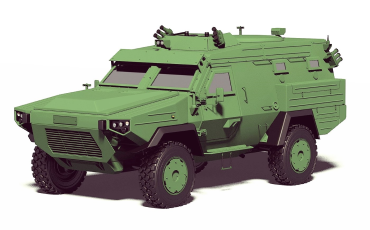
|
Military Utility Vehicle | 500 Vehicles | It is designed to be used in combat areas or during peacekeeping operations. It was designed around the success of the Rihdan (Hunter) mine resistant ambush protected vehicle. The Haruspex Colonial Legionary plans to replace it's fleet of Rihdan's with the Vannad. Armor of the Vannad was developed by Haruspex International Armaments. Vehicle armor provides protection against small arms fire, artillery shell splinters, landmines and IEDs. Vehicle has a V-shaped hull. The Vannad can be fitted with add-on armor kit for increased protection. This add-on kit can be fitted or removed in field conditions within 30 minutes without using any special tools. The Vannad is a smaller supplement to mine resistant ambush protected vehicles. |
| Rhidan| The Rihdan (Hunter) LMV | 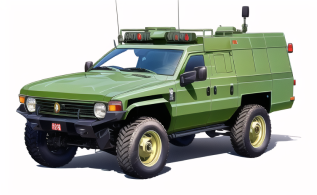
|
Light Multirole Vehicle | 300 Vehicles | The Rihdan (Hunter) Light Multirole Vehicle was an innovative tactical vehicle, developed to reduce threat posed by improvised explosive devices and landmines. Vehicle uses modular armor packs and has a collapsible V-shaped floor, which deflects mine blasts. Seats are attached to a roll-bar rather than floor. The Rihdan LMV is more survivable than conventional light utility vehicles and trucks. |
| Drihtan| The HIA Drihtan (Thunder) ISV | 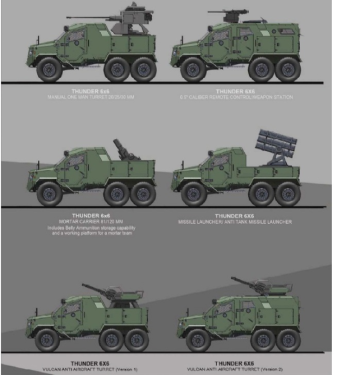
|
Infantry Support Vehicle | 30 Vehicles | It is designed to be used in combat areas or during peacekeeping operations. It was designed around the success of the (Ferret) MUV mine resistant ambush protected vehicle. The Haruspex Colonial Legionary plans to replace it's fleet of Valkyrie launch vehicles with the Drihtan as it combines both the artillery and armored vehicle in one package. Vehicle armor provides protection against small arms fire, artillery shell splinters, landmines and IEDs. Vehicle has a V-shaped hull. The vehicle can be fitted with add-on armor kit for increased protection. This add-on kit can be fitted or removed in field conditions without using any special tools. |
IFV's & APC's
| LAV-25| The Jeban (Viper) Variant | 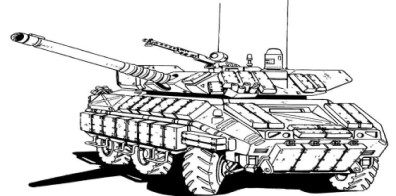
|
IFV | 225 Vehicles | The Jeban IFV is fitted with a VCI 105b three-man turret, armed with a 105-mm low recoil rifled gun. This turret is compatible with standard WA 105-mm ammunition, including APFSDS rounds. The VCI 105b turret is a fully-stabilized gun, which gives it fire-on the move capability and enables to engage stationary and moving targets with a high first round hit probability. A total of 35 rounds are carried inside the vehicle, 12 of them are stowed inside the turret and are ready to use. Secondary armament consists of coaxial 12.7-mm machine gun and stub recoilless rifle remote weapon system so as to reduce crew exposure to hostile elements. The LAV-25 Jeban is the main armored vehicle of the NKSDF. |
| S-11| The S-11 Infantry Fighting Vehicle | 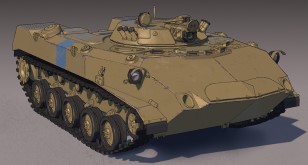
|
ifv | 50 Vehicles | The S-11 is lighter compared with most modern IFVs, as it was designed using composite materials to save weight wherever possible. The S-11 used composition multi-layer armor with glass fiber, ceramic and aluminum alloy. The front arc provides protection against 30-mm armor-piercing rounds and all-round protection against 14.5-mm armor-piercing rounds. The vehicle is also fitted with automatic fire suppression and NBC protection systems. The S-11 can be also fitted with active protection system, similar to that used on the HIA S-94a Jelduno (Victory) Main Battle Tank. |
| S-12| The S-12 Half Track Series Armored Personnel Carrier | 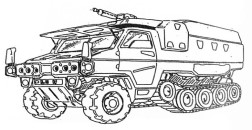
|
APC | 125 Vehicles | The S-12 is a continued success as an armored personnel carrier, alongst with it's other variants. It is air-transportable, and is able to be quickly moved where it is needed. Its variable armor system provides the adequate armor protection for the given situation. The speed of the APC allows it to dismount its infantry to engage light targets and then quickly vacate the area.
There are four main models (A through D), which forms the basis for at least 24 variants. The initial idea was for a vehicle that could be used to transport a single squad of legionary to the battlefield protected from enemy small arms fire, and with some protection from artillery fire. In addition, the standard mounting of a remote turret allows the vehicle to provide support by fire for the infantry squad once they have disembarked in battle. |
Tanks
| Light Tank| The Rubmeda (Hoplite) Light Tank | 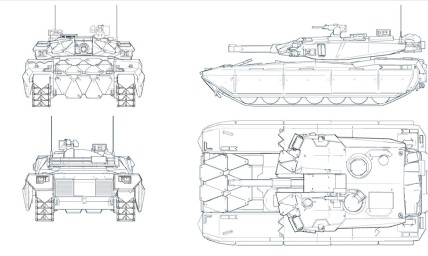
|
LST | 22 Vehicles | The Rubmeda is a capable Light Support Tank. It can be airlifted as well, expanding its abilities to serve the HIL and associated countries of operation. The main armament is the HIA manufactured 11A-2 105 mm gun which fires APFSDS, APDS, HEAT, HESH, HE, smoke and canister rounds. A muzzle system is fitted which allows rapid compensation to be made for barrel movement due to changes in temperature.
While the LAV-25 Jeban is the NKSDF's main armour focus, it has taken delivery of a few Rubmeda light tanks. |
Anti-Personnel/Tank
| S-17| S-17 Anti-Personnel/Light Armor Vehicle | 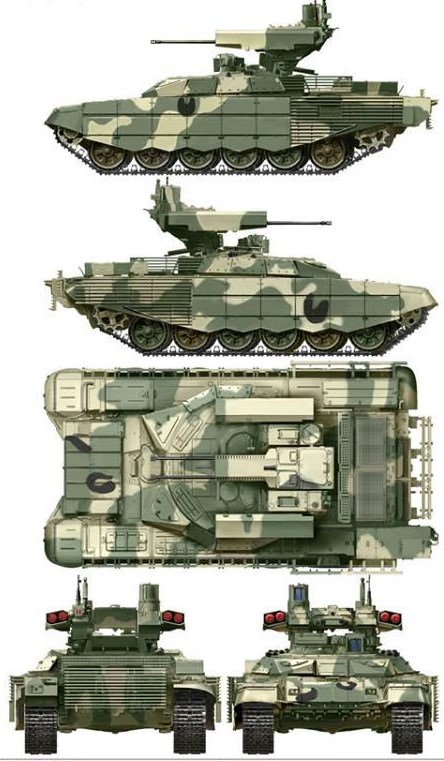
|
APT | 20 Vehicles | When used in urban terrain, the S-17 is employed on a 2 to 1 ratio, meaning two S-17's protecting one MBT. In rural operations that ratio is reversed, i.e. one S-17 protecting two MBTs. This results from the complexity of fighting in urban terrain and the need for a versatile anti-personnel machine that can engage multiple targets at once and on different height levels. The introduction of such a vehicle makes urban fighting less stressful on tanks and can relieve them of some of the workload so that they can concentrate on their main objective of engaging other tanks and hardened targets.
A new mount is equipped with two OWS-25R 25mm dual-feed cannon with a cyclic rate of fire of up to 600 rds/min. A total of 4200 rounds of ready use ammunition can be carried. The cannon can fire a wide range of ammunition types including: High Explosive - Tracer (HE-T), Armour-piercing discarding sabot (APDS), High Explosive Fragmentation (HE-FRAG) and Armor-Piercing - Tracer (AP-T). A dual setup of the GL21 automatic grenade launchers, followed by a singular HIA K1-2b 12.7mm HMG. A total of four launchers for the anti-tank guided weapon (ATGW) which can fire various types of warhead, are mounted on either side of the main armament. These include a tandem HEAT warhead to defeat targets fitted with explosive reactive armour. To enable targets to be engaged under day and night conditions when the S-17 is stationary or moving, a computerized fire-control system is fitted. |
| Q39| Q39 Nota'man (Devil) Tank Destroyer | 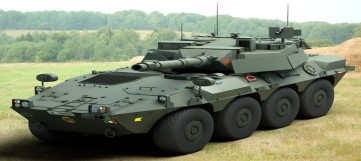
|
Anti-Tank | 130 Vehicles | The Q39 Nota'man (Devil) is fitted with a fully-stabilized HIA 105-mm main gun. Despite it's relatively small caliber this gun penetrates front armor of the most widespread tanks of that are fielded within Eurth, at a range of 1500 meters. Vehicle is fitted with a modern fire control system. The Q39 Nota'man (Devil) tank destroyer has a good fire accuracy at a range of 1000 meters in day or night conditions and while firing on the move.
The Q39 also has three other variants including; 76mm Tank Destroyer, Self-propelled anti-aircraft gun platform. Armed with 30mm gatling cannon, and a self-propelled air defense missile system. Armed with dual launchers, 4 tubes of R4 Anti-Aerocraft missiles. It fits into the NKSDF's usage of terrain and defense. |
Artillery Systems
| Towed| The TAC-12 Towed 155mm Howitzer | 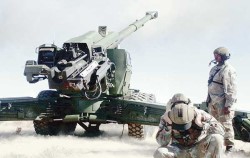
|
Artillery | 2,225 Guns | The TAC-12 is a 155 mm 45 calibre, towed gun howitzer. It has such indirect fire flexibility that it can be employed in the traditional gun, howitzer and mortar roles, and can cover an area of almost 1000 km2 from a single firing position. The gun is capable of maximum sea level ranges of 30 km with ERFB projectiles and 39 km with ERFB base bleed projectiles. The TAC-12 is fully compatible with WA standard 155-mm ammunition and has a direct fire range of 3000 meters (using a Frag-HE round). |
| HMARS| The Tajem (Devil) High Mobility Artillery Rocket System | 
|
Multiple Launch Rocket System | 20 Vehicles | The Tajem (Devil) HMARS is operated by a crew of three. Driver, gunner and section chief, but the computer-based fire control system enables a crew of two or even a single soldier to load and unload the system. HMARS received approval to enter production in March 2003 and is currently in Full Rate Production. HMARS successfully completed initial operational test and evaluation in November 2004. In The 3rd Legion, 27th Field Artillery Regiment, XVIII Airborne Company Artillery was the first unit equipped with HMARS. It was successfully performed combat in Operation Dudym Jelduno (Total Victory) during the incursion into the mid-lands of the Northern Territories within the Region of Europa.
The Tajem HMARS carries a quad launcher with six-pack of rockets per launch pod mounted on a eight by eight [8x8] chassis used by the Q39 anti-tank vehicle, and can launch the entire MLRS family of munitions. The standard 227-mm rocket is 3.96 m long and weighs 307 kg. The HMARS fires a full range of rockets, including HE-FRAG and cluster. It also fires newly developed extended range guided munitions at a range of 60 - 100 km. For self defense it has a limited arc and direction anti-infantry 12.7mm autocannon mounted on the side of the forward cab of the vehicle. The design for this vehicle can be found here: https://www.artstation.com/nomansnodead |
Anti-Aircraft Systems
| MMLS| The Pylg Cdyp (Back Stab) MMLS | 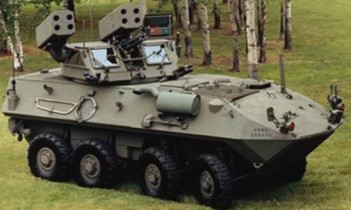
|
Multi-Role Multiple Missile Launcher System | 20 Vehicles | The Pylg Cdyp (BackStab) is a multi-role multiple missile launcher weapon system. Launchers can be dedicated to artillery saturation and or to anti-aerocraft needs. It is a versatile and highly mobile wheeled missile launcher. The typical SAM used is the 231L Myhla (Lance), which has a range of 30 km with a 70 kg Fragmented High Explosive warhead. However, it can use a variety of ranged weaponry, for example; SS-30 to SS-60 Artillery Saturation Rockets, as well as the semi-active radar homing R4-Talon SAM. It can also accomodate foreign missiles of the same size and performance.
The Pylg Cdyp (BackStab) is also armed with the HIA A7RC auto-cannon. This gun is an externally powered, dual-feed, gatling-barrel weapon which may be fired in semi-automatic or automatic modes. In the automatic mode, the rate of fire is approximately 175 rounds per minute. The Type A7RC does not depend on gases for operation but instead utilizes an electric motor, located in the receiver, to drive all the moving parts inside the cannon. Ammunition feeding, loading and firing, extraction, and ejection are all done by the motor. This weapon fires programmable proximity fused fragmentation rounds against air targets and HE-FRAG and AP rounds against ground targets. Maximum effective range against air targets is 4 km. |
| MMLS| The Chyyban (Snapper) Mobile Missile Launcher System | 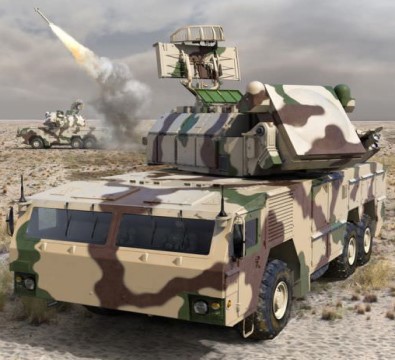
|
Multi-Role Multiple Missile Launcher System | 12 Vehicles | The Chyyban MMLS is a versatile and highly mobile wheeled missile launcher. The Rocketry Research Laboratories at HIA came up with this design after hearing reports from the Haruspex Legions of having to develop, purchase, and maintain a large number of systems to deploy the various missiles they used. The Chyyban was created to solve this problem. It houses a wide array of sensors, and features an adjustable missile rack capable of housing a variety of missile modules. A missile module is simply a number of missiles tubes bundled together. With the various missile modules available, the Chyyban is suitable for use as an AA battery, MLRS, tank buster, or coastal defense battery. |
Drones
| Drone| The HK-03 Hehzy (Ninja) UAV | 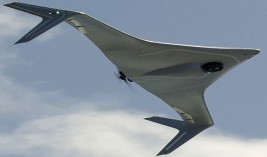
|
Unmanned Aero System | 30 Aerocraft | The Hehzy (Ninja) is a medium altitude, multi-mission unmanned aerocraft system apart of the HAD Hunter-Killer series of aerial vehicles. This vehicle line can be configured with differently-sized fuel tanks and different sensor payloads to meet ever-changing tactical missions, including intelligence, surveillance, reconnaissance, target acquisition and communications relay. The Hehzy can perform intelligence, surveillance and reconnaissance (ISR) operations over a large area. Additionally, the Hehzy has a blended body design, enabling a much larger payload volume (3.2 cubic feet) that allows it to carry more payload than other UAV's of its size. |
Combat Aerocraft
| HAD 22b| The HAD 22b Lupny (Cobra) Interceptor Aerocraft | 
|
Interceptor | 12 Aerocraft | The HAD 22b Lupny (Cobra) served with distinction in many a border skirmish and war during the early 60's, and continued to be deployed aerocraft until the mid-eighties. Though production ceased in 2008 it continues to serve in rear guard elements or has been donated to colonial needs.
Powered by a single engine and designed on a simple airframe, these fighters are inexpensive but fast, suiting the strategy of forming large groups of quick strike fighters to overcome the technological advantages of more advanced aircraft. |
| S30| The S30 Sylrada (Machete) | 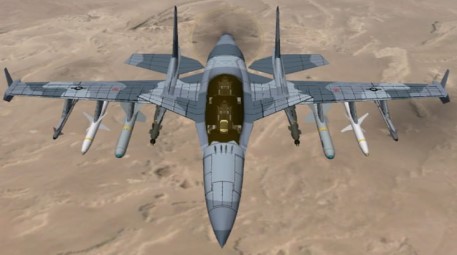
|
Ground Support Aerocraft | 8 Aerocraft | The S30 Sylrada/B is designed primarily for air-to-ground missions, employing ordinance such as the AGM-65, GBU-39/B, GBU-31, GBU-32, GBU-38, CBU-97, CBU-59, BLU-107 and additional stores. Optimized for precision strike, the S30 Sylrada/B employs GPS guided munitions, including the GBU-39/B Small Diameter Bomb (SBD) to dispatch ground threats with minimal collateral damage. The S30 Sylrada/B can carry up to 28 GBU-39/Bs, or 6 AGM-65s or 2 GBU-31 JDAMS externally in addition to 2 AIM-9s. A rugged flexible platform, the S30 Sylrada delivers precision guided ordinance in significant quantities while surviving substantial small arms fire and direct hits from Man-Portable SAMs. |
| S37| The S37 Nyddman (Rattler) Multi-Role Aerocraft | 
|
Multi-Role Aerocraft | 8 Aerocraft | The HAD S37 Nyddman has a spikelike fuselage, with: fixed oval-shaped engine inlets alongside the canopy, the inlets set off from the fuselage to avoid ingesting stagnant "boundary layer" air; a large rear-mounted delta wing; canards alongside the engine inlets; and a tall tailfin.
Overall construction is of aircraft aluminum honeycomb, with titanium where required, such as engine firewalls. The Nyddman is arguably less elegant in appearance than other aerofighters, but it has a certain solid, businesslike, and combatative style of its own. However, the extensive use of aluminum honeycomb makes it a surprisingly light aircraft for its size. The HAD S37 has seven stores pylons, including a centerline pylon; a pylon under each engine inlet; and two pylons on each wing outboard of the main landing gear. There is provision for a third outboard pylon under each wing. Maximum external load is 7,000 kilograms (15,400 pounds). An external fuel tank is almost always carried on the centerline pylon. |
| S39| S39 Jeban (Viper) Multi-Role Aircraft | 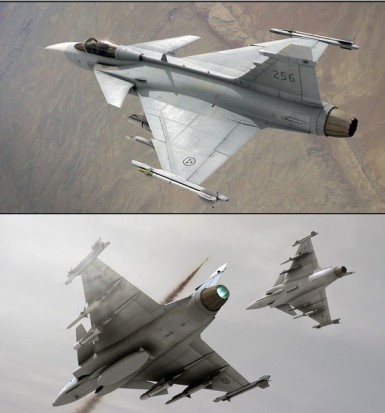
|
Multi-Role Aerocraft | 24 Aerocraft | The S39 Jeban (Viper) was designed to provide for a fast sink rate and hard, short landings. While lacking thrust reversers that would allow the engine to aid braking, the aircraft's canards can be angled downwards to act as air brakes. The main wing is also fitted with flaps and elevons to change the flow of air around the wing. The canard configuration gives a high onset of pitch rate and low drag, enabling the aircraft to be faster, have longer range and carry a larger payload. In addition to being able to take off with up to 14,330 lb of rockets, bombs, or missiles, the S39 Jeban is also equipped with either a dual arrangement of 27 mm Mauser BK-27 cannons or a single 30 mm GSH multi-barrel cannon. |
| S39| S-20 Fryma (Whale) SLRA | 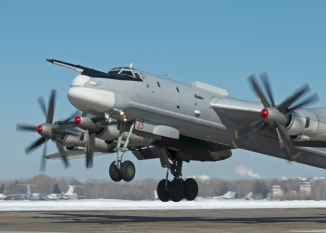
|
Strategic Long-Range Aerocraft | 4 Aerocraft | Throughout much of the Cussian border wars of the past, a pair of S-20's would fly a weekly long-range patrol from the Perya seabase in the Ranke Sea, out into the Sea of Storms and down towards the Adlantic Ocean. The planes would run parallel to the Cussian coastline and were invariably intercepted and escorted by Cussian fighters. Even now, with the War over for more than forty years and now the territory of the North annexed, Haru Fryma's still probe Argic airspace.
With a range of more than 8,000 miles, the S-20's can reach any point in the Northern Argic Hemisphere without refuelling (and depending on where they are based – much of the Southern Hemisphere as well.) • Each of the S-20's eight four-blade propellers break the sound barrier as they turn, making the aerocraft perhaps the loudest plane on Eurth. In fact, Fryma's are so noisy that they can be detected by underwater sonar sensors and submarines. Fighter pilots sent up to intercept Fryma's reportedly have mentioned that the planes’ unmistakable drone can even be heard over the sound of their own jets. |
Logistics Aerocraft & Helicopters
| HT-01| The HT-01 Vycd Muytan (Fast Mover) | 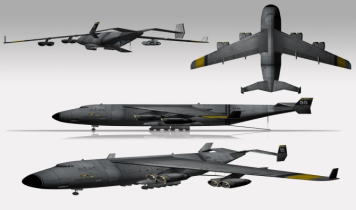
|
Cargo Aerocraft | 5 Aerocraft | The HAD HT-01 Vycd Muytan (Fast Mover) was developed to meet the requirements of the Ministry of Defense, notably, the payload requirement of 27.2 metric tons. These requirements are for a 120 ton take-off weight (240,000 lb 108.8 metric tonnes), since the Haruspex Aero Legions needed to land the transport on short runways (i.e. Runic Aerodome—900 m). With a runway of 2300m and at maximum take off weight of about 141 tons (282,000 lb 127.9 metric tonnes), the aircraft will be able to carry a maximum of 37.6 tons (75,200 lb 34.1 metric tonnes). It also has a maximum range of 6,500 km (without payload). |
| V-33H| The V-33H CibanVnuk (SuperFrog) Heavy Lift Helicopter | 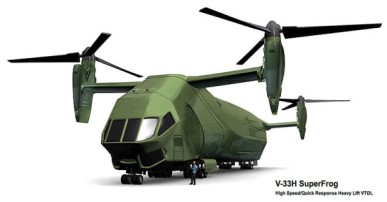
|
Heavy Lift Helicopter | 6 Aerocraft | The V-33H CibanVnuk (SuperFrog) is powered by four HAD-A9 turboshaft engines, providing 8,550 kW (11,400 SHP) each. The blades made from fiberglass with steel spar cores and fitted with titanium on the leading edges. The rotor blades have an electrical de-icing system, and the rotor hub is made of titanium. Its cargo capacity of 20 tonnes (44,000 pounds), gives it the ability to carry most of the HIL's vehicles in use.
There are 40 fold-down seats along the cargo bay, and 60 more seats can be fitted in the center aisle of the cargo bay. There are three passenger doors, two on the left and one on the right, that open downward and have built-in steps. The machine has hydraulically-actuated clamshell doors and a ramp on the end, plus a roller conveyor and two 2.5-tonne (5,500 pound) capacity electric winches on rails to move payloads around in the cargo bay. |
Attack Helicopters/Gunships
| Ryfg| The Ryfg (Hawk) Attack Helicopter/Gunship | 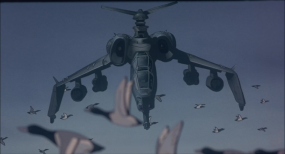
|
Attack Helicopter/Gunship
|
15 Aerocraft | The Ryfg(Hawk) AH-01 has a Rotorprop tail rotor which could rotate its axis through 90° to act both as a conventional anti-torque rotor in horizontal flight and as a pusher propeller, thereby transforming the Ryfg AH-01 into a compound aircraft in cruising flight.
Ryfg AH-01 can be armed with a wide variety of unguided rockets ranging from 20 mm to 130 mm caliber. The largest rockets tested were a type of 130 mm rocket that were carried on the hardpoints just as missiles are carried, while smaller caliber rockets were mounted in conventional rocket pods. The most frequently used rockets are those ranging from 57 mm to 90 mm and a total of 4 pods can be carried under the stub wings, one under each hardpoint. |
VTOL
| TE-01B| TE-01B Dymuh (Talon) VTOL Gunship | 
|
VTOL Gunship | 15 Aerocraft | The Dymuh (Talon), Pronounced: "DEaemoo-ha", is a vertical takeoff and landing aerocraft that supports a tilt-engine design in similarity to that of the tilt-rotor concepts. Primary role is to act in the role formerly filled by previous generation attack helicopters.
The main weapon of the attack VTOL is a 20 mm autocannon in a nose mounted turret. The turret is designed for sixty degree side to side rotation and forty-five degree up and down movement. On the hard points near the cockpit are permanent large capacity mini-missile pods. The aircraft carries four additional wing hard points on the outer wings outside of the lift engines. These hardpoints can carry bombs, missiles, additional mini-missile pods such as 'Hellfires', or even additional guns. Unlike the nose mounted gun, these guns are fixed forward. For additional protection, the Dymuh is equipped with chaff and flare dispensers. The weaponry on the attack aircraft make it ideally suited to attack troops, protective bunkers, and armored vehicles. To a lesser extent, it is capable of engaging air targets as well. |
| TR-02| The TR-02 Aykma (Eagle) VTOL | 
|
VTOL ASW | 4 Aerocraft | The TR-02 Aykma (Eagle) is a tilt rotor design. The aircraft flies much like a conventional aircraft in most cases but the blades can be flipped upwards so that the aircraft can hover. The aircraft is much faster than helicopters in level flight but can hover just like a helicopter. The TR-02's main function is ASW, however it can suit many roles including transport, gunship, and electronics warfare.
The anti-submarine warfare version carries a dipping sonar and magnetic anomaly detector (known as MAD gear) for submarine hunting. In addition, the aircraft can carry a large number of sonar buoys. A total of thirty-two sonar buoys can be carried in the cargo hold. The anti-submarine warfare version of the TR-02 'Aykma' has a crew of four with two of the crew acting as sensor operators. Usually, torpedoes would be carried on anti-submarine versions of the aircraft when operating in the anti-submarine role. Both the transport and anti-submarine warfare versions of the TR-02 'Aykma' have a cargo hook. |
| 202 FPAC| The 202 Cemjanvecr (Silverfish) FPAC | 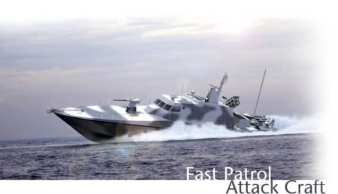
|
FPAC | 5 | The Cemjanvecr FPAC has been developed for a tough professional use with excellent performance qualities at both low and high speeds and strong emphasis on seakeeping. The deep V hull, will enable the boat to reach speeds up to 64 knots in calm waters and up to 40 knots in Sea State 4. Soft and dry ride in adverse conditions, offering, thus, an outstanding platform for the various tasks in the brown waters and the open sea. |
| 205 Class| The 205 Ymekydun (Alligator) Class Corvette | 
|
Corvette | 4 | The design has been directed to minimizing the optical and infrared signature, above water acoustic and hydro acoustic signature, underwater electrical potential and magnetic signature, pressure signature, radar cross section and actively emitted signals. The hull material is a sandwich construction comprising a PVC core with a carbon fiber and vinyl laminate. The material provides high strength and rigidity, low weight, good shock resistance, low radar and magnetic signature. |
| 210 Class| The 210 Dekan (Tiger) Class Frigate | 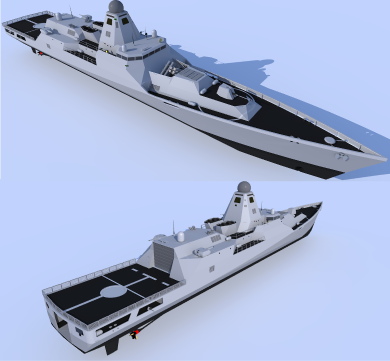
|
Frigate | 3 | The ships incorporate many items of sensor, weapon, fire-control and propulsion equipment of a variety of Haruspex armaments corporations. HAD input is evident in the short-range SAMs, anti-ship missiles, anti-submarine torpedo system and air-search radar, while HIA input is seen in weapons such as the 127-mm gun, CIWS, with VCI following up in the development of sensors such as the surface-search and fire-control radars, and the sonar.
The Dekan class vessel is designed to incorporate stealth shaping techniques to reduce radar cross-section. Originally tasked with defending against Cussian aircraft, missiles and submarines, this potent frigate is now used in high-threat areas to conduct anti-air, anti-submarine, anti-surface, and strike operations. |
| 212 Class| The 212 Cfunt (Sword) Class Missile Frigate | 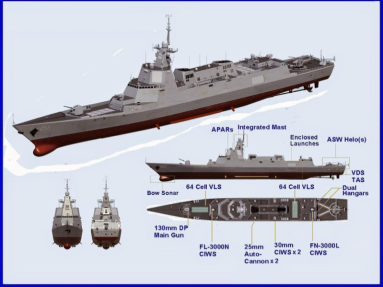
|
Guided Missile Frigate | 3 | The Cfunt (Sword) Class is a class of frigate designed to engage hostile ships by means of missile attack, and to provide warships and transport ships with protection against ship and air attack. Intended primarily for anti-ship operations, it was designed to compliment anti-submarine warfare (ASW) Olath Vlos destroyers.
Envisaged as a minimum cost, advanced area-defence platform for construction in large numbers, the Cfunt (Sword) Class class has evolved over the years. The design was based on the hull of the cruiser-sized Gigin class destroyer. The Cfunt was originally designated as a destroyer, but the design was redesigned as a frigate in 1990. |
| 214 Class| The 214 Olath Vlos (Dark Blood) Class Destroyer | 
|
Guided Missile Destroyer | 2 | The Olath Vlos (Dark Blood) Class is a long-range escort destroyer class vessel that undertakes roles including area air defense, anti-submarine warfare, surveillance, reconnaissance and interdiction. The ship is capable of countering simultaneous threats from the air, surface and sub-surface. Armed with anti-ship and anti-aircraft missiles plus anti-submarine torpedoes. They also carry a pair of torpedo-armed ASW VTOL aerocraft. |
| N3 RTSV| The standard imperial navy rocketry tracking surface vessel. | 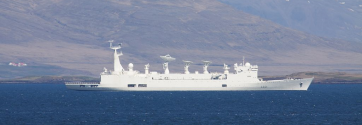
|
Intelligence | 01 | The systems aboard the N3 RTSV Class allow it to track missiles and satellites. There are two navigational radars operating on the I-band, one for control of the helicopters, and a HAD-ASR/B/2 air surveillance radar operating on the E and F-bands. The intelligence systems are a radar operating on the L-band for trajectory tracking, radars for missile tracking operating on the C-band. Furthermore, there are six telemetry-tracking radars operating on the E and F-bands, a laser-radar, and an optical tracking unit, and 14 antennas for telemetry. |
| T39 Class| The Type 39 Crehehk Cuh (Shining Son) class submarine | 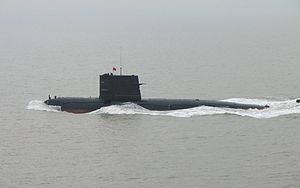
|
Diesel-Electric | 6 | The class is the first diesel-electric Haruspex submarine to use the teardrop hull shape. Primary weapon for the Type 39 is the 533 mm Yu-4 torpedo, a locally produced passive homing 40-knot (74 km/h) torpedo based on the SAET-50 and roughly comparable to the SAET-60. Surface targets may be attacked at up to 15 km. Yu-6 wire-guided torpedoes may also be used for targeting submarines. The Type 39 is capable of carrying the Onyx anti-ship missile, a cruise missile which can be launched from the same tube as the boat's torpedoes, and can target surface vessels at up to 80 km. The missile is subsonic and carries a 165 kg warhead. For mining operations, in place of torpedoes, the submarine can carry 24 to 36 naval mines, deliverable through the torpedo tubes. By general design, the launching system is compatible with AShM, ASW, torpedoes of both Europan and Argic origin. |
| T42 Class| The Type 42 Lydvecr (Catfish) class submarine | 
|
SSK | 2 | The Lydvecr incorporates a double hull system composed of an inner pressure hull and an outer "light" hull. This allows more freedom in the design of the exterior hull shape, resulting in a submarine with more reserve buoyancy than its western analogs. The Lydvecr submarines have reactor coolant scoops similar to the short ones found on the Freda Cryng (White Shark) class submarines.
The distinctive "bulb" or "can" located on top of the rudder, houses its towed sonar array when retracted. Most Lydvecr's have the wake detection system known as (SOKS) of which incorporates hydrodynamic sensors, which detect changes in temperature and salinity. They are located on the leading edge of the sail, on the outer hull casing in front of the sail and on the bottom of the hull forward of the sail. |
| N6 MSV| The N6 Caagan (Seeker) class minesweeper and patrol vessel. | 
|
Minelayer & Sweeper | 11 | Its main missions are gathering data of ports in the Cetan Sea/Protectorate of North Korinon territory, and searching naval mine and minesweeping to protect sea lanes and routes. Much like the N5 class, the N6 class is often used as sea-going/coastal patrol vessels. |
| N1 Support| The standard imperial navy supply and support class. | 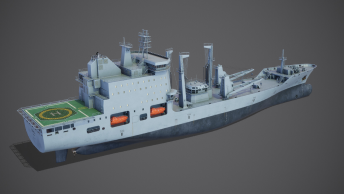
|
Support | 4 | The N1 class has two dual solid/liquid underway transfer stations per side and can replenish two ships per side and one astern. The class was initially designed to have the capacity for 5,170 t (5,090 long tons) of fuel oil, 3,360 t (3,310 long tons) of diesel fuel, 1,160 t (1,140 long tons) of JP-5 aviation fuel, 250 t (250 long tons) of distilled water, 180 t (180 long tons) of provisions, 170 t (170 long tons) of munitions and 15 t (15 long tons) of spare parts. These numbers change with the needs of the fleet.
Credit for ship design: Stas sayhallo |
| N2 Support| The standard imperial navy submarine tender. | 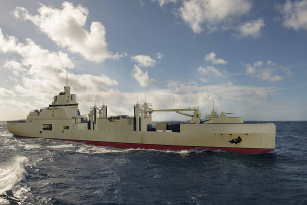
|
Support | 2 | The N2 beyond being a submarine tender can also be utilized as a LyN vessel ("command and replenishment ship"). In addition to their role as a fleet tender, the ships with this added designation can accommodate an entire general staff and thus supervise naval operations as a command ship. The ships of the class designated LyNs, all have superstructures that were extended aft by 8 m (26 ft) to accommodate the additional staff requirements. The LyNs have one crane positioned along the centreline. |
| N4 PSV| The standard imperial navy and corporate platform support vessel. | 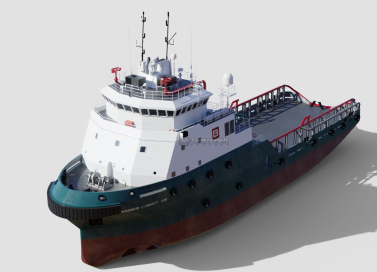
|
Support | 2 | The N4 PSV class is a ship specially designed to supply offshore oil, gas and military platforms. These ships range from 50 to 100 metres (160 to 330 ft) in length and accomplish a variety of tasks. The primary function for most of these vessels is logistic support and transportation of goods, tools, equipment and personnel to and from offshore oil platforms and other offshore structures. In recent years, a new generation of platform supply vessels entered the market, usually equipped with Class 1 or Class 2 dynamic positioning system.
Credit to artwork: 3-dimensional |





